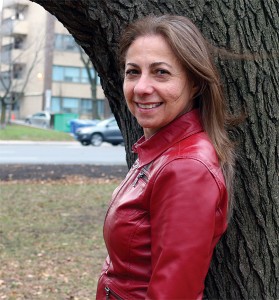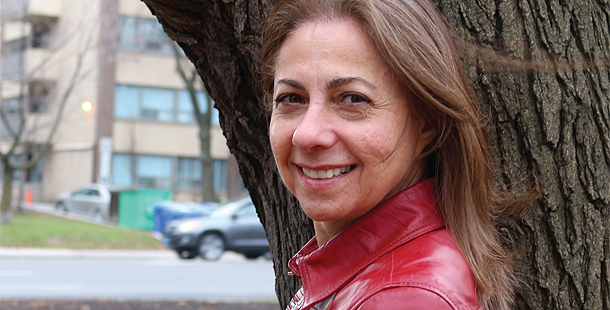
A LIFE IN PERIL: Author Pearl Goodman used her family as the inspiration for her novel “Peril: From Jackboots to Jack Benny”, a sometimes light-hearted memoir about life as the child of Holocaust-survivor parents in 1960s Toronto.
The clock is ticking in Pearl Goodman’s Foxbar Road office.
The one-time English teacher, now psychotherapist and writer, sits snug in a leather-bound chair, her eyes attentive, and her openness about life with Holocaust-surviving parents is laid bare.
She shares how trauma in one generation mutates when introduced to another.
It‘s the major theme in her novel, a subtle memoir called Peril: From Jackboots to Jack Benny, published by Bridgeross Communications.
Goodman describes her 293-page volume as a coming-of-age tale, during the days when American pop culture was shaping the generations growing up in the ’60s and ’70s. The protagonist’s name, Peril, is a pun on Goodman’s and it both reflects how she felt in her household as a teenager, and how her name sounds on a Yiddish tongue.
“When my need for my own personality and independence comes up, my parents and I clash,” the 59-year-old says. “Then you get to hear their story, behind their reaction, which is always extreme.
“You find out what their struggles were during the Holocaust and after.”
There’s hesitation in Goodman. She shares her trepidation, and refrains from naming her parents.
Her father was incarcerated by the Nazis at Buchenwald and Theresienstadt. Her mother was placed in a labour camp and forced to work as a welder.
And their suffering did not end when V.E. Day came. After leaving Poland they were jailed in a Cyprian prisoner of war camp from 1943 to 1948, and then struggled after their arrival in the newly formed nation of Israel.
After five years in Israel, they immigrated to Canada, settling in the St. Clair Avenue West and Winona Drive area of Toronto.
Their trauma, as told in their daughter’s voice, manifests in how they deal with a daughter who wants to fit into North American culture.
“Trauma, because anxiety is so high after traumatic experiences, you walk around quite anxious, and anything can be catastrophic,” she shares. “There is a lot of rigidity in my parents’ case.
“Everything was black or white. There were no shades of grey.”
With that in mind, Goodman offered to share her experiences in a professional capacity at Holocaust Education Week in the fall.
“I did a paper … about trauma and how it gets, not passed on in the sense of genetically, (but) the traumatized people have a way of looking at the world,” she says. “And that message gets passed to their children.
“That’s the thing about the post-Holocaust story. If the children tell their own story, like I did, it’s going to be their story plus their parents’ story.”
Not all children of Holocaust survivors have had their parents share the details of their horrific experience, Goodman observed, and that gave her the opportunity to play with the format she would write her experiences in.
The challenge for Goodman, who has 25 short stories ready for publication, was how to write it in the long form. But she solved her dilemma the best way she knew how.
“I could write chapters, which were in essence short stories. I could bring in my parents’ stories as fragments as they pertained to my life growing up.
“I could basically kill two birds with one stone,” she says, a pleasant smile affixed to her lips. “It was quite nice to problem-solve in that way.”
Then came the infusion of her making light of her own struggles, akin to the brand of youthful woes the TV series The Wonder Years inspired.
“There’s a lot of humour in the book, which I found quite significant,” she says, with a laugh. “For me to bring in, take out a tragedy, and make something funny.
“I couldn’t take their story and make it funny, but my story is funny.”
But the most important message in her book, she feels, is that human nature can overcome.
“The chapters that start off violent or raging for me change with random moments that’s quite funny or serendipitous,” she says. “Ultimately, the idea that we can work through trauma, we can live through tragedy, towards other possibilities is a very important message for me.”

